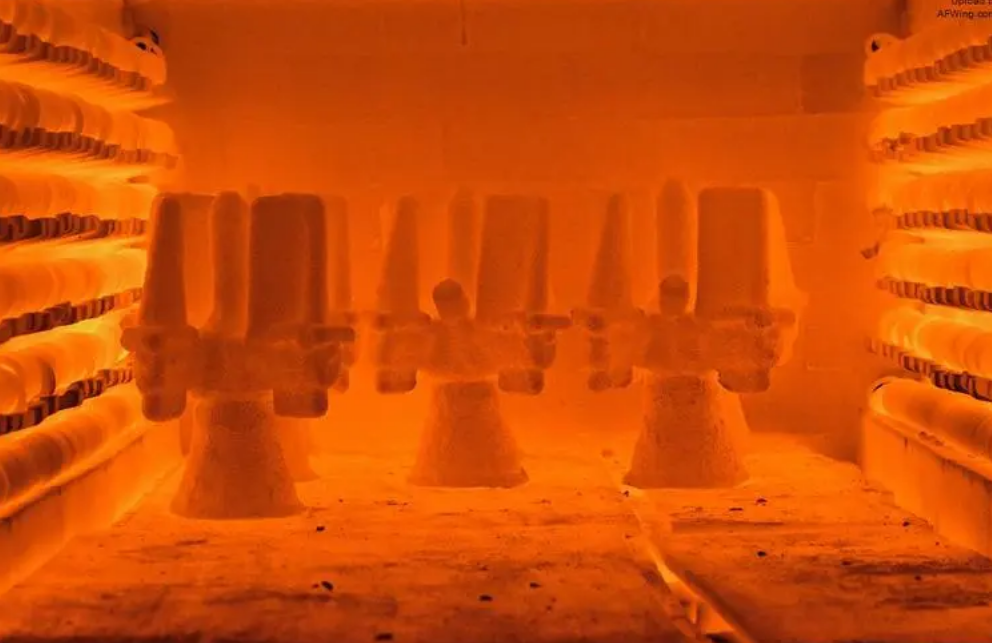Alumina ceramic sintering process methods
Sintering is an important step in the production of alumina ceramics, which has great influence on the physical and chemical properties of alumina ceramics. Sintering is the process of heating powder or powder compact to a temperature below the melting point of the basic components, and then cooling to room temperature in a certain way.

Alumina ceramics is a kind of ceramic material with alumina (Al2O3) as the main body, but no matter what type of ceramic products are inseparable from the sintering process, alumina ceramics are no exception. The driving force for the sintering of alumina ceramics is mainly the change of the surface energy of the powder, that is, the surface energy of the powder decreases, the surface area decreases, and the ceramics achieve densification.
What is the conventional sintering method of alumina ceramics?
Conventional sintering methods can not meet the requirements of preparing transparent alumina ceramics. The common sintering methods for preparing transparent ceramics are: a atmosphere and vacuum sintering, b hot isostatic pressing sintering, c discharge plasma sintering, etc.
What is the conventional sintering method of alumina ceramics
1, Atmosphere and vacuum sintering
Alumina ceramics prepared by atmospheric pressure sintering usually have 1~3% residual pores, and by sintering in vacuum or atmosphere, alumina blanks can produce a large number of oxygen vacancies, accelerate the diffusion of O2-, and accelerate the densification rate of the blanks, which can make the residual pores easier to eliminate.

2, Hot isostatic pressing sintering
Hot isostatic pressing (HIP) is a process production technology that integrates high temperature and high pressure, and the heating temperature can reach 2000℃. By using the high-pressure inert gas or nitrogen in the closed container as the pressure transmission medium, the working pressure can reach more than 200MPa. Under the joint action of high temperature and high pressure, the closed air port which is difficult to eliminate under normal pressure sintering can be eliminated, and the submicron alumina ceramics with high transparency can be prepared. Because of the small grain size of alumina transparent ceramics prepared by this method, the mechanical properties of the ceramics are very excellent.
3, Sischarge plasma sintering
Discharge plasma sintering (SPS) is the raw material powder into the mold made of graphite and other materials, the use of upper and lower die punch and energized electrodes to apply specific sintering power and pressing pressure to the raw material powder, through discharge activation, thermoplastic deformation and cooling to complete the sintering process. SPS has been widely used in the preparation of alumina transparent ceramics in recent years because of its rapid sintering and the densification of fine ceramic structures at low temperatures.
Through the process of sintering densification, the material transfer can be carried out by solid phase diffusion, including surface diffusion, grain boundary diffusion, lattice diffusion, etc., so as to help you get better quality alumina ceramics.
What are the sintering processes of alumina ceramic? Alumina ceramic sintering process includes the following steps:
1. Powder preparation: The incoming aluminum oxide powder is prepared into powder materials according to different product requirements and different molding processes. The particle size of the powder is less than 1μm, if the manufacture of high-purity alumina ceramic products in addition to the purity of alumina in 99.99%, but also need to ultrafine grinding and make its particle size distribution uniform. When extrusion molding or injection molding is used, binders and plasticizers, generally thermoplastics or resin organic binders with a weight ratio of 10-30%, need to be introduced into the powder to facilitate the molding operation. The powder material formed by hot pressing process does not need to add binder. The powder was treated by spray granulation to make it spherical in order to improve the fluidity of the powder and facilitate the automatic filling of the die wall in the molding.
2. Molding: There are a variety of molding methods for alumina ceramic products, such as dry pressing, grouting, extrusion, cold isostatic pressing, injection, casting, hot pressing and hot isostatic pressing. The commonly used dry pressing technology is limited to objects with simple shape and inner wall thickness of more than 1mm, and the ratio of length to diameter is not greater than 4:1. The grouting forming method is an earlier molding method, which is suitable for large size and complex shape parts.
3. Firing: The technical method of densifying granular ceramic billets and forming solid materials is called sintering. The method is to remove the void between the particles in the body, remove a small amount of gas and impurity organic matter, and make the particles grow and combine with each other to form a new substance. The heating device used for firing is the most widely used electric furnace. Atmospheric pressure sintering is non-pressure sintering, in addition to hot pressure sintering and hot isostatic pressure sintering. Although the output of continuous sintering is increased, the cost of equipment and mold is too high, so in addition to axial pressure is axial heat transfer, the rest are uniformly heated hot pressing sintering method.
4. Finishing and packaging process: Some alumina ceramic materials need to be finished after sintering, finishing and packaging process. For example, artificial bones are made of materials that require a high surface finish, like a mirror, to increase lubricity. Due to the high hardness of alumina ceramic materials, it is necessary to use harder grinding and polishing brick materials SIC, B4C or diamond for grinding and polishing processing. Laser processing and ultrasonic processing grinding and polishing methods can also be used.
5. Coating process enhancement: In order to enhance the mechanical strength of alumina ceramics, a new alumina ceramic strengthening process has been introduced abroad. The process is novel and simple, the technical means taken is on the surface of alumina ceramics, using electron ray vacuum coating, sputtering vacuum coating or chemical vapor evaporation method, plated with a layer of silicon compound film, heating treatment at 1200 ~ 1580, so that alumina ceramics toughened